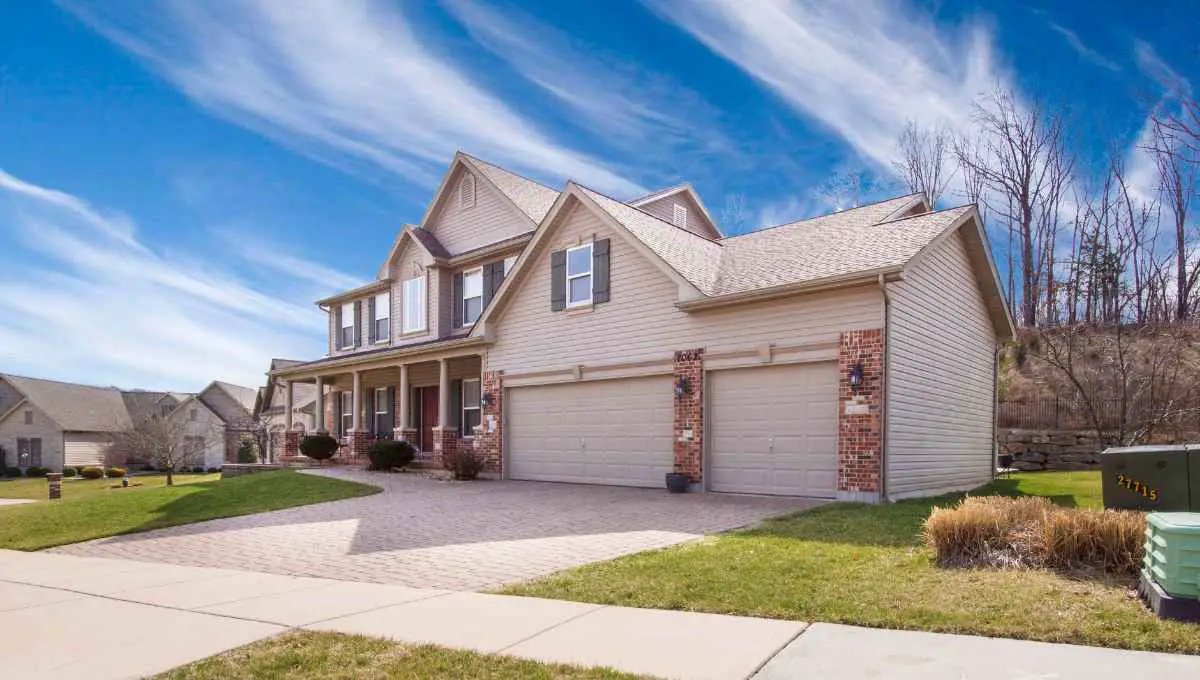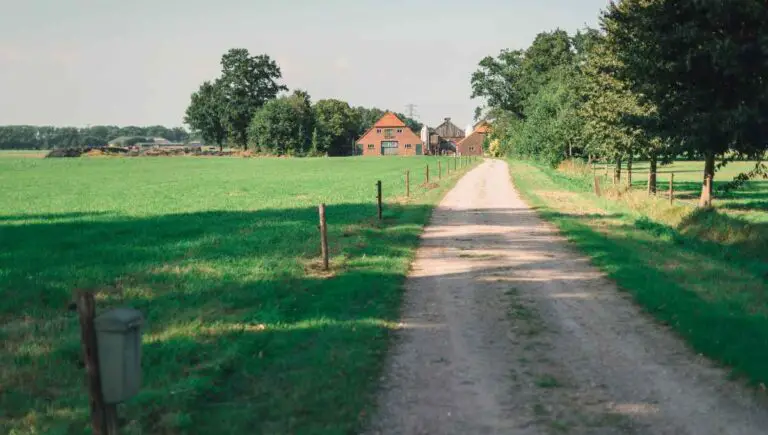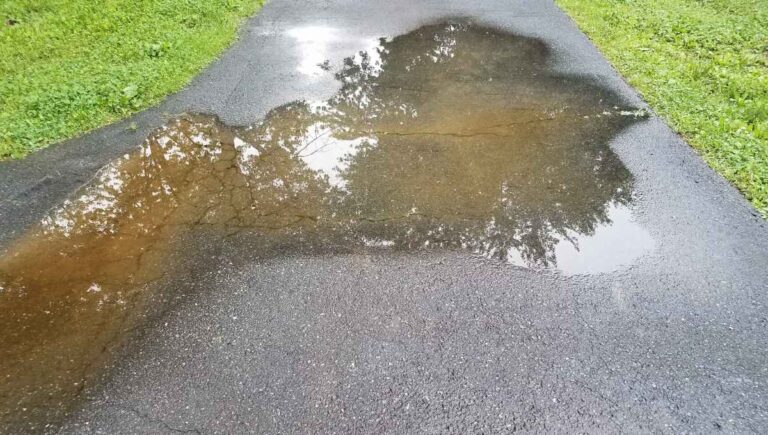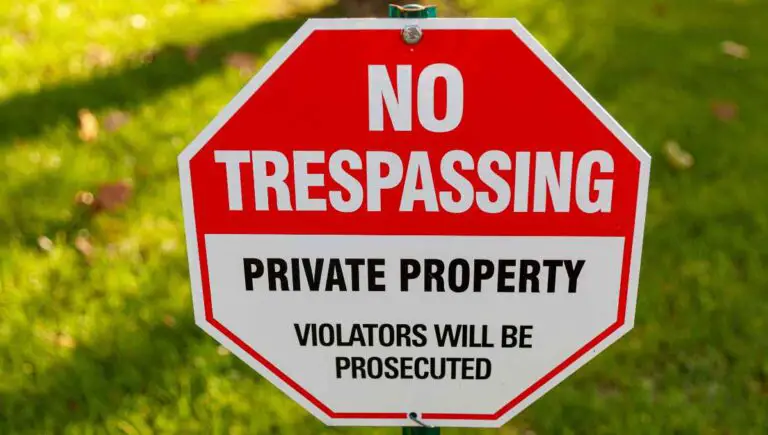Can I Put a Driveway in My Front Yard? (You Need This First)

Having a driveway in your front yard can be a convenient and practical addition to your home. However, before you start construction, it’s important to understand the regulations and guidelines that govern front yard driveways.
You can put a driveway in your front yard, but it depends on local zoning and building codes. Some cities and neighborhoods have restrictions on front yard driveways, while others allow them with certain conditions. It’s important to research the specific regulations in your area before starting construction.
Of course, there are lots of other questions that go into building yourself a new driveway. So, we’re going to talk more about the legalities surrounding your new driveway, as well as the best options for your lawn and a thorough explanation of how to turn a grass strip into a beautiful driveway!
This post contains affiliate links from Amazon and other stores. This means Yard Blogger may earn a commission if you make a purchase using any of our links. Please refer to our full affiliate disclosure policy for full details.
Here’s a Quick Pro Tip!
So, here is what you need in order to ensure your new driveway is the best it can be. These tools are guaranteed to help you make your driveway the talk of the block!
1. Sod Cutter – Whether you’re going to make a grass or a concrete driveway, you need to cut away the sod. This allows you to cut it into even strips that you can either put back or use elsewhere!
2. Soil Tamper – Packing the dirt before building the driveway is vital for a strong foundation.
3. Shovels – It may seem simple, but having a high-quality shovel really makes any job easier!
It All Starts with Paperwork
You can’t just slap down some concrete and call it a driveway. If you don’t install the driveway properly, your city or town council may inform you that your driveway isn’t legal, and you’ll be forced to rip it all out.
So, before you start pouring concrete, you need to go to your city planner’s office and find out what kind of permits and insurance you need to procure before you start. Only once you get the paperwork in order should you start working on the driveway itself.
Other Things to Consider
While you’re working on the paperwork portion of the driveway, make sure you consider whether or not you need a right-of-way easement. Having an easement ensures that you retain the right to access your driveway should the city change the zoning, amongst other factors.
You also want to consider the time of year. Paving a driveway in the winter is not recommended due to the inability of the driveway to seal. You’ll also want to wait if it’s too hot or if it’s raining, as all of these factors influence how your driveway turns out.
If you’re wondering how to make your front yard a legal driveway, the paperwork is only the first part. Next, you’ll have to replace your grass with concrete. It is possible, but it’s a job.
How to Turn a Lawn into a Grass Driveway
If you want to turn your lawn into a driveway but don’t want to spend lots of extra money to pour concrete, consider installing a grass driveway instead. A grass driveway will look just like your lawn did before but will have the stability to hold a vehicle without damage.
These lawns are perfect for homes with little to no extra space for a driveway and those without detached garages or carports. It allows you to have a safe place to store your car when not in use, but without detracting from the vibrance of a yard.
To build a driveway over grass, you’ll first need to gather all necessary supplies, including a shovel, a soil tamper, gravel, paver tiles, loam (soil), and grass seed or sod.
Call Before You Dig
The first thing to do when you’re going to turn your lawn into a driveway is to check for utility lines before you dig. In the United States, you can call 811 for information on where buried utility lines are located to ensure you do not accidentally hit a line while getting your lawn ready for a driveway.
Even though you’ll only need to dig down about six inches below the street grade for a grass driveway, you still want to ensure that you’ll not hit any utility lines. Failure to do so can result in your project taking longer than expected if you hit a line!
Dig It!
Once you’ve got the all-clear to dig, clear out the topsoil over the entire area where your new grass driveway will be. Clear at least six inches down below the street grade to ensure you have room to place the pavers.
Without pavers, the driveway will not be able to support vehicles, especially if it’s rainy. Additionally, you want to make sure you dig down far enough because without that depth, your driveway won’t look level to the road, and you may have issues in the future.
Tamp the Ground and Place the Pavers
Once you’ve cleared the area, you’ll need to tamp down the remaining soil. Your aim is to compact down the soil to provide a sturdy foundation for the honeycomb pavers to sit on.
Once the soil has been tamped, you’ll want to add at least two to three inches of gravel to the soil. Again, tamp these down to ensure a solid and stable foundation for the pavers.
Then, lay the pavers on top of the stones; they should end up being about an inch below street level. You should be able to snap the pieces together as you lay them down. If necessary, cut pieces to cover the exposed area fully.
Fill in the Honeycomb
After the pavers have been laid, you’ll need to fill them in with soil or loam. Use your shovel or even a push broom to ensure that the pavers have been evenly and completely filled with soil, providing extra stability to the pavers.
Water the soil once it’s been placed. This helps to ensure that the soil has fully settled into the pavers and makes sure that your new driveway will be completely solid when it’s time to drive a vehicle on it.
It’s Time for Grass!
Finally, you can lay your sod over the top of the pavers. If instead, you want to plant grass seed, you can do that as well. You may want to add some extra soil before planting the grass to ensure you’re at the right grade.
Once you’ve got all your supplies, turning your lawn into a grass driveway is a project that only takes a day. And once it’s complete, you’ll have a lawn where you can safely park a vehicle!
Turning a Grass Lawn into a Concrete Driveway
While turning your lawn into a grass driveway is a relatively simple process, turning your lawn into a concrete driveway is a bit more complicated but still doable! If you don’t want to get dirty, this might be a good job to call a contractor for.
However, if you are a DIY type of person, we’ve got you! We’ll explain in-depth how you can turn your lawn into a concrete driveway. Remember, get your permits and call 811 before you start anything else!
Step one gathering supplies! For this job, you’ll need a few tarps, or if you’re in a hurry, grass killer, sod cutter, shovel, fill soil, soil tamper, and, of course, concrete and a mixer.
Kill and Remove the Grass
Before you can get started with the concrete, you need to ensure that the grass where you want your driveway to be is completely dead. If you’ve got time and want to use an environment-friendly option, you can lay down tarps over the area where the driveway will be.
It will take a couple of weeks, but as long as you don’t remove the tarps, the grass underneath will eventually die from a lack of sunlight. So you just have to remove the dead grass, underlying soil, and root system.
However, if you’re in a hurry, you can choose to use a grass and weed killer instead. These work much more quickly, a matter of hours to days instead of weeks. And again, once the grass is dead, you’ll be able to remove it and its roots for a clean surface for your new driveway.
Once the grass has died, you’ll want to use the sod cutter to remove the grass and topsoil cleanly. Make sure you’ve gotten all the roots of the grass and weeds; otherwise, the grass may affect your concrete later on, and no one wants that. Failure to remove the grass correctly is one of the leading reasons why your driveway may turn black.
Prepare the Base
Once the grass has been removed, you can get started on fully preparing the area where the driveway will go. To do so, first dampen the soil. Damp, but not saturated, dirt is best for this step as it will compact the best.
Use your soil tamper to compact the dirt into an even layer. You may need to remove more soil. You want to create at least a foot of open space below the grade of the street that the driveway will attach to. The concrete needs to be thick enough to support a vehicle.
If you’re concerned that your dirt will slide, you can also build a frame to contain it. To do so, simply use wood planks or two-by-fours to create a simple frame that covers the area where the concrete will go.
Mix and Pour the Concrete
Once your area is prepared, you are ready to use your concrete mixer to prep the concrete. Make sure you measure the water carefully, as failure to do so may result in your concrete looking patchy.
Once your concrete has been poured, carefully smooth it and leave it to cure. If you’re concerned you don’t know how to pour concrete, you may want to contact a professional for this part.
Once the driveway has cured, you should be good to use it. Remember, however, not to walk on a new driveway too soon, as you may damage it without meaning to!
Is It Worth the Cost?
Concrete, like everything else, has gotten more expensive in the last couple of years. In 2023, concrete costs between $100 and $175 per cubic yard! This means your new driveway isn’t going to be cheap.
However, having a driveway also increases the value of your home, as long as it’s done correctly. Plus, you only need to repave a driveway once every 10-15+ years, so it can be considered a solid investment.
You might also enjoy our post on Do I Need a Permit to Repave My Driveway?
Other Options for Your Front Lawn
If, after reading this far, you’ve decided that turning your grass lawn into a driveway isn’t worth it, don’t fret. There are other options you can choose for your front lawn. For example, maybe mowing your lawn is getting to be a bit much for you, but you don’t want to strip it completely.
Have you considered adding a pergola or a gazebo to your home instead? Maybe you’ve wondered if a gazebo will add value to your home? It certainly can! Plus, that’s more area you don’t have to take care of!
Decor Ideas
If you want to change up your lawn but don’t want to add a driveway, you can add walking trails using gravel or concrete and follow the instructions above for a driveway, just on a smaller scale.
You can also add a pergola, gazebo, or other small outbuilding. Or, if you prefer water features, consider a koi pond with a fountain! Not only will it cut down on lawn care, but it’ll add value and be a talking point of your property for years to come!
Easy Planting Ideas
If you want to go the eco-friendly route instead of a grass lawn, there are plenty of options! Consider planting a groundcover like creeping thyme, clover, or even types of mint, which stay close to the ground and don’t require mowing!
These options are great for pollinators like bumblebees and prevent you from having to mow your lawn every few days! If you’re into the idea of a no-mow yard, this is definitely the way to go!
Final Thoughts
If you’re sick of having an empty yard, you have plenty of options. Whether you choose to go with a grass driveway, a concrete driveway, or no driveway at all, having options is important! We hope this article helps you choose which option is best for you, and enjoy your lawn, no matter what you choose to do with it!












